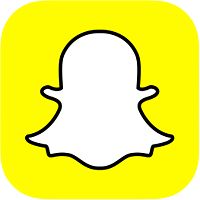Snapchat
From DigitalRhetoricCollaborative
Contents |
History
Snapchat was first launched in July 2011 as Picaboo, the name was shortly rebranded as Snapchat during the same year. In 2012 the application was released on Android devices shortly followed by an Apple ISO release.[3] The application quickly grew in popularity and by late 2013 the first major update to the application was launched. The update enhanced the speed and design of the application allowing for swipe navigation, double-tap reply option for users and an improved friend finder - creating a more fluid interface. [4] In early 2013 the application launched another update that enabled users to send and alter video snaps and added a text message feature which allowed users to correspond both privately and publicly. The next update introduced the My Story feature of the application which allowed users to post snaps that could be viewed by their whole network instead of single selected friends. Today the application includes features such as customizable text, geo flitters and photo filters multi-color drawing modes that allow the user to interact with their environment and then disseminate the information to a mass of people or a selected individual.
Features
The features of Snapchat allow users to enhance, diminish or recontextualize their environments and produce, for a second party, a hyperfocused and mediated glimpse into their day-to-day life. All photo manipulating features are added to the image after the picture is taken, but before the snap is sent. These features include Text, Image Filters, Geo Filters and Color Drawing.
Text
In the application, users can add text by tapping on the image and then using the built-in keyboard to add a preselected amount of characters. The application links with the keyboards installed on the users phone which allows for multiple language capabilities, including Emojis. The default text is displayed on top on the image set within a semi-transparent grey box. Updates to the application in 2013 and 2014 have allowed for higher customization for added text. On the top right corner of the screen is located a large T set within a white box. by tapping this icon the user can switch through text display options that include the default text a bolded text that is left-aligned and the same bolded text that is center-aligned. With the two bolded text options, the user can manipulate the size, color and angle of the text my pitching a pulling the texts on the screen.
Image Filters
Once the image is captured, Users can swipe with one finger to the right of the image to enable the 3 different Image Filters inbeded into the aplication. The first filter adds a warm and saturated mask over the image. the second filter adds a cool blue

